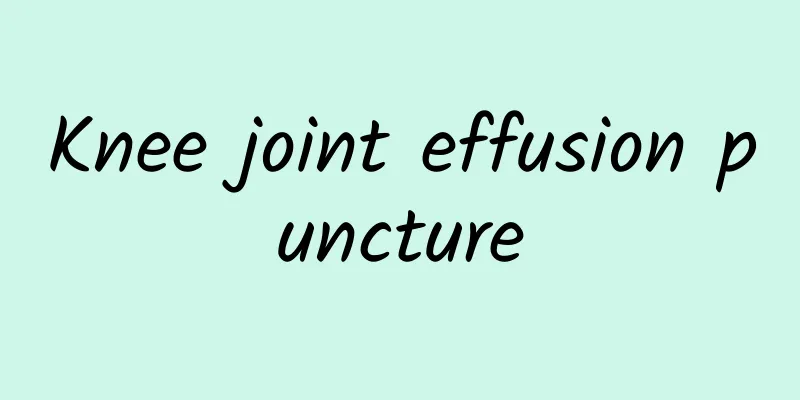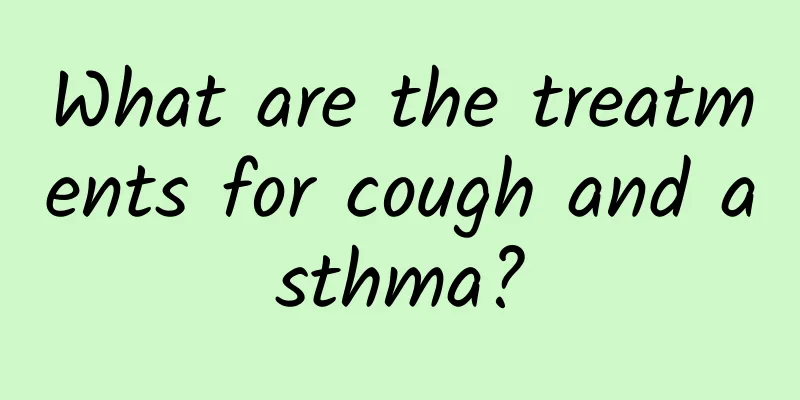Knee joint effusion puncture

|
The presence of fluid in the knee joint is a serious situation and needs to be discharged in time, otherwise it will affect the health of the knee joint and cause symptoms of arthritis and rheumatism. Therefore, for knee joint effusion, knee joint effusion puncture surgery can be performed. For the specific surgical method, you should choose a large hospital to conduct surgical examination, and understand the care issues after the knee joint effusion puncture surgery. Common properties of knee joint effusion include: bloody fluid (caused by trauma, effusion after arthroscopy), light yellow fluid (synovitis), yellow turbid fluid (gouty arthritis), purulent fluid (septic arthritis), etc. The commonly used method steps are as follows: 1. Check the floating patella test (+), explain the patient's condition and briefly introduce the puncture method to obtain cooperation and comfort the patient; 2. Prepare items for changing medicines: mask, hat, gloves, 5ml syringe (do not use 10ml syringe!), and medicine box. No anesthetic required! 3. The patient lies flat on the bed or examination bed, with the knee straight and relaxed, and the puncture point is marked: a horizontal line is drawn at the upper pole of the patella, and a vertical line is drawn at the lateral patellofemoral joint space. The intersection of the two lines is the needle insertion point; 4. Disinfection: The disinfection range must be sufficient, more than 10cm around the puncture point; 5. Wear gloves, take a 5ml syringe and puncture at the puncture point toward the suprapatellar bursa. There should not be a feeling of bony obstruction, otherwise the bone or cartilage will be punctured and the pain will be severe. After entering the joint cavity, fluid can be extracted. The syringe draws fluid in all directions with negative pressure. The depth can be controlled at the same time. Use the other hand to squeeze the suprapatellar bursa and the medial fluid accumulation. At the same time, move the patella up and down and left and right. Pay attention to the patient's feelings during the puncture process. Communicate with the patient intermittently to distract his attention. Check whether the floating patella test is (-) while extracting. If it is (-), you can end it. If it is (+) and the effusion cannot be drained out, it may be because the effusion is thick or in the wrong position. You can massage the suprapatellar bursa and squeeze the joint cavity effusion toward the puncture point until the residual effusion is drained out as much as possible until the floating patella test is (-). Pull out the needle and press the puncture point with a sterilized cotton ball for 3-5 minutes. Do not take a bath within 24 hours. Whether to apply pressure bandage and knee joint chuck-type fixation is determined based on the nature of the effusion. Note: 1. The disinfection range must be sufficient, because the extraction process needs to squeeze the effusion around the joint to prevent re-contamination; do not arbitrarily disinfect only the puncture point like sealing to prevent joint cavity infection! 2. Choose a 5ml syringe (do not use a 10ml syringe!), so that the pain during puncture is mild (so no need to use anesthetics!) and it is convenient to maintain negative pressure with one hand. Some people may wonder: Isn't it better to draw out the effusion because the needle of a 10ml syringe is thicker? The fact is, if you can't draw out 5ml, you can't draw out 10ml either! 3. Are other puncture points okay? Such as the inner side? The knee pit? Can I sit with my knees bent? NO! NO! NO! Some other puncture points are not safe (there are important nerves and blood vessels along the way), and some are painful and difficult to extract. For example, the knee pit is prone to puncturing into the prepatellar fat pad. Patients are more likely to be nervous in the sitting position with their knees bent, and the doctor needs to squat to operate, which is awkward. When the patient lies flat on the hospital bed or examination bed, the doctor can sit on a chair, which is more stable and makes the extraction easier. 4. After the extraction is completed, check whether the needle is intact. Therefore, the puncture point on the outer and upper side of the knee joint can be called the "universal puncture point." It is hoped that this method can be promoted and become industry practice and norm. Prevent the emergence of different empirical methods. |
<<: Bone marrow puncture for anemia
Recommend
How to restore thin uterine wall to normal?
As young people become more open-minded, more and...
What are the traditional Chinese medicine treatments for hypothyroidism?
Hypothyroidism is a disease caused by abnormal th...
What causes spleen deficiency and what are the clinical manifestations of spleen deficiency?
The so-called spleen deficiency is a term in Trad...
Why do I always have headaches?
There are many causes of headaches, including col...
What are the dangers of proteinuria
What is proteinuria? Simply put, the protein in t...
What are the treatment principles for viral encephalitis?
If certain principles are not followed in the trea...
Can white wine soaked garlic nourish the kidneys?
Soaking white wine and garlic together can help r...
You must be interested in the bed skills that Hua Tuo passed on to his descendants
Hua Tuo, as we all know, was a very famous medica...
How to choose a postpartum belly belt
After giving birth, women will find that they hav...
What ingredients should be used with millet to make porridge to nourish the stomach
Millet is a kind of rice that is deeply loved by ...
What should I eat if I have a cough and phlegm during confinement?
During the confinement period, you may catch a co...
The leather was scratched by rusty objects
It is common to get scratches and bumps in life. I...
What are the taboos of taking Chinese patent medicine?
As people in modern society are becoming more and...
Does popcorn cause internal heat?
Getting a fever is a common symptom in our daily ...
Do you know why muscles atrophy?
In recent years, the incidence of muscle atrophy ...









